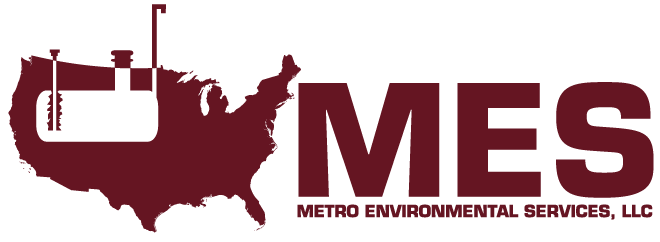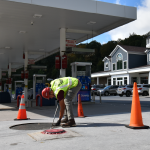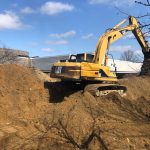Methods of Leak Detection For Underground Storage Tanks
Read the Article Source HERE on Veeder-Root
As an owner or operator of a facility with underground storage tanks (USTs), you need to understand the basic leak detection requirements in your state. If your UST and/or underground piping don’t have leak detection then you may not be compliant with federal laws.
What does the EPA require for tank leak detection for petroleum?
Detecting UST releases will quickly help to stop contamination before it spreads from your site, as the EPA requires owners and operators to detect these releases from their UST systems.
You must provide your UST system with release detection (often also called leak detection) that allows you to meet two basic requirements:
- You can detect a leak from any portion of the tank or its piping that routinely contains petroleum; and
- Your leak detection is installed and calibrated in accordance with the manufacturer’s instructions.
Additional information on the EPA UST requirements can be found at https://www.epa.gov/ust. State and local regulations may differ from the federal requirements. Contact your local agency to ensure that you are meeting all requirements.
The 7 methods for release detection
The Environmental Protection Agency (EPA) has identified the following seven methods that owners and operators may use to meet the federal leak detection requirements:
- Secondary Containment with Interstitial Monitoring
Secondary containment often uses a barrier, an outer wall, a vault or a liner around the UST or piping. Tanks can be equipped with inner bladders that provide secondary containment. Leaked product from the inner tank or piping is directed toward an interstitial monitor located between the inner tank or piping and the outer barrier. There are a number of interstitial monitoring methods including the use of a simple dipstick or a continuous, automated vapor or liquid sensor permanently installed in the system to monitor interstitial spaces. Interstitial spaces can also be filled with brine or glycol solutions and their levels monitored. Also, sophisticated pressure/vacuum monitoring systems may be used to indicate pressure changes within these spaces. - Automatic Tank Gauging Systems
A probe permanently installed in the tank is wired to a monitor to provide information on product level and temperature. These systems automatically calculate the changes in product volume that can indicate a leaking tank. - Vapor Monitoring (including tracer compound analysis)
Vapor monitoring checks for leaks by measuring the soil around the UST for escaping product fumes or special tracer chemicals. This method requires installation of carefully placed monitoring wells. Vapor monitoring can be performed manually on a periodic basis or continuously using permanently installed equipment. - Groundwater Monitoring
Groundwater monitoring senses the presence of liquid product floating on the groundwater. This method requires installation of monitoring wells at strategic locations in the ground near the tank and along the piping runs. To discover if leaked product has reached groundwater, these wells can be checked periodically by hand or continuously with permanently installed equipment. This method cannot be used at sites where groundwater is more than 20 feet below the surface. - Statistical Inventory Reconciliation
In this method, a trained professional uses sophisticated computer software to analyze inventory, delivery and dispensing data, which the owner must supply regularly. Also, the owner can purchase software and enter data into his or her own computer, which statistically analyzes the information. - Tank Tightness Testing with Inventory Control
This method combines periodic tank tightness testing with monthly inventory control. Inventory control involves taking measurements of tank contents and recording amount pumped each operating day, as well as reconciling all this data at least once a month. This combined method must also include tightness tests, which are performed by trained professionals. This combined method can be used only temporarily (usually for 10 years or less). - Other Methods Meeting Performance Standards
Any technology can be used if it meets a performance standard of detecting a leak of 0.2 gallons per hour with a probability of detection of at least 95 percent and a probability of false alarm of no more than five percent. Regulatory authorities can approve another method if you demonstrate that it works as well as one of the methods above and you comply with any condition the authority imposes.
Trusted since 2002, Metro Environmental Services (MES) is an industry-leading, full service environmental company. We offer full-service solutions for clients who store, consume, or sell petroleum products across the Northeast. Contact us at (631) 393-6655.







